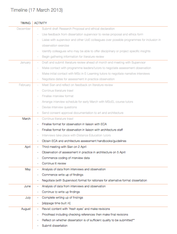EDC multimodality assignments
History of scholarship and print references from Sian:
Some of my rambling thoughts contesting the newness of multimodality and the the suggestion that it deprivileges writing as the mode that matters:
0 Comments
Leave a Reply. |
Categories
All
Archives
October 2013
TimelineOther stuff
|
